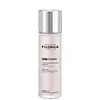What's inside
What's inside
 Key Ingredients
Key Ingredients

 Benefits
Benefits

 Concerns
Concerns

No concerns
 Ingredients Side-by-side
Ingredients Side-by-side

Water
Skin ConditioningGlycerin
HumectantButylene Glycol
HumectantCapryloyl Glycine
CleansingCitric Acid
BufferingDimethicone PEG-7 Phosphate
CleansingSodium Hydroxide
BufferingSodium Polyacrylate Starch
AbsorbentEthylhexyl Salicylate
UV AbsorberDisodium EDTA
Parfum
MaskingSodium Chloride
MaskingSucrose Palmitate
EmollientCetrimonium Bromide
AntimicrobialCaesalpinia Spinosa Gum
Skin ConditioningButyl Methoxydibenzoylmethane
UV AbsorberSalvia Sclarea Extract
AntiseborrhoeicGlyceryl Linoleate
EmollientDiethylhexyl Syringylidenemalonate
Skin ProtectingPrunus Amygdalus Dulcis Oil
Skin ConditioningPotassium Sorbate
PreservativeSodium Benzoate
MaskingGlucose
HumectantCyamopsis Tetragonoloba Gum
Emulsion StabilisingXanthan Gum
EmulsifyingAlteromonas Ferment Extract
Skin ConditioningPentaerythrityl Tetra-Di-T-Butyl Hydroxyhydrocinnamate
AntioxidantPotassium Chloride
Calcium Chloride
AstringentPhenoxyethanol
PreservativeSodium Hyaluronate
HumectantMagnesium Sulfate
Glutamine
Skin ConditioningSodium Phosphate
BufferingAlcohol
AntimicrobialAscorbic Acid
AntioxidantSodium Acetate
BufferingTris(Tetramethylhydroxypiperidinol)Citrate
StabilisingLysine Hcl
Skin ConditioningArginine Hcl
Skin ConditioningAlanine
MaskingHistidine Hcl
Skin ConditioningValine
MaskingLeucine
Skin ConditioningThreonine
Isoleucine
Skin ConditioningTryptophan
MaskingPhenylalanine
MaskingTyrosine
MaskingGlycine
BufferingPolysorbate 80
EmulsifyingSerine
MaskingCystine
MaskingCyanocobalamin
Skin ConditioningGlutathione
Asparagine
MaskingAspartic Acid
MaskingOrnithine Hcl
Skin ConditioningGlutamic Acid
HumectantNicotinamide Adenine Dinucleotide
Skin ConditioningTocopherol
AntioxidantProline
Skin ConditioningMethionine
Skin ConditioningTaurine
BufferingHydroxyproline
Skin ConditioningGlucosamine Hcl
Coenzyme A
Skin ConditioningCI 17200
Cosmetic ColorantSodium Glucuronate
HumectantThiamine Diphosphate
Skin ConditioningRetinyl Acetate
Skin ConditioningInositol
HumectantNiacin
SmoothingNiacinamide
SmoothingPyridoxine Hcl
Skin ConditioningBiotin
AntiseborrhoeicCalcium Pantothenate
Riboflavin
Cosmetic ColorantSodium Tocopheryl Phosphate
AntioxidantThiamine Hcl
MaskingFolic Acid
Skin ConditioningWater, Glycerin, Butylene Glycol, Capryloyl Glycine, Citric Acid, Dimethicone PEG-7 Phosphate, Sodium Hydroxide, Sodium Polyacrylate Starch, Ethylhexyl Salicylate, Disodium EDTA, Parfum, Sodium Chloride, Sucrose Palmitate, Cetrimonium Bromide, Caesalpinia Spinosa Gum, Butyl Methoxydibenzoylmethane, Salvia Sclarea Extract, Glyceryl Linoleate, Diethylhexyl Syringylidenemalonate, Prunus Amygdalus Dulcis Oil, Potassium Sorbate, Sodium Benzoate, Glucose, Cyamopsis Tetragonoloba Gum, Xanthan Gum, Alteromonas Ferment Extract, Pentaerythrityl Tetra-Di-T-Butyl Hydroxyhydrocinnamate, Potassium Chloride, Calcium Chloride, Phenoxyethanol, Sodium Hyaluronate, Magnesium Sulfate, Glutamine, Sodium Phosphate, Alcohol, Ascorbic Acid, Sodium Acetate, Tris(Tetramethylhydroxypiperidinol)Citrate, Lysine Hcl, Arginine Hcl, Alanine, Histidine Hcl, Valine, Leucine, Threonine, Isoleucine, Tryptophan, Phenylalanine, Tyrosine, Glycine, Polysorbate 80, Serine, Cystine, Cyanocobalamin, Glutathione, Asparagine, Aspartic Acid, Ornithine Hcl, Glutamic Acid, Nicotinamide Adenine Dinucleotide, Tocopherol, Proline, Methionine, Taurine, Hydroxyproline, Glucosamine Hcl, Coenzyme A, CI 17200, Sodium Glucuronate, Thiamine Diphosphate, Retinyl Acetate, Inositol, Niacin, Niacinamide, Pyridoxine Hcl, Biotin, Calcium Pantothenate, Riboflavin, Sodium Tocopheryl Phosphate, Thiamine Hcl, Folic Acid
 Reviews
Reviews

Ingredients Explained
These ingredients are found in both products.
Ingredients higher up in an ingredient list are typically present in a larger amount.
Disodium EDTA plays a role in making products more stable by aiding other preservatives.
It is a chelating agent, meaning it neutralizes metal ions that may be found in a product.
Disodium EDTA is a salt of edetic acid and is found to be safe in cosmetic ingredients.
Learn more about Disodium EDTANiacinamide is a multitasking form of vitamin B3 that strengthens the skin barrier, reduces pores and dark spots, regulates oil, and improves signs of aging.
And the best part? It's gentle and well-tolerated by most skin types, including sensitive and reactive skin.
You might have heard of "niacin flush", or the reddening of skin that causes itchiness. Niacinamide has not been found to cause this.
In very rare cases, some individuals may not be able to tolerate niacinamide at all or experience an allergic reaction to it.
If you are experiencing flaking, irritation, and dryness with this ingredient, be sure to double check all your products as this ingredient can be found in all categories of skincare.
When incorporating niacinamide into your routine, look out for concentration amounts. Typically, 5% niacinamide provides benefits such as fading dark spots. However, if you have sensitive skin, it is better to begin with a smaller concentration.
When you apply niacinamide to your skin, your body converts it into nicotinamide adenine dinucleotide (NAD). NAD is an essential coenzyme that is already found in your cells as "fuel" and powers countless biological processes.
In your skin, NAD helps repair cell damage, produce new healthy cells, support collagen production, strengthen the skin barrier, and fight environmental stressors (like UV and pollution).
Our natural NAD levels start to decline with age, leading to slower skin repair, visible aging, and a weaker skin barrier. By providing your skin niacinamide, you're recharging your skin's NAD levels. This leads to stronger, healthier, and younger looking skin.
Another name for vitamin B3 is nicotinamide. This vitamin is water-soluble and our bodies don't store it. We obtain Vitamin B3 from either food or skincare. Meat, fish, wheat, yeast, and leafy greens contain vitamin B3.
The type of niacinamide used in skincare is synthetically created.
Learn more about NiacinamideWater. It's the most common cosmetic ingredient of all. You'll usually see it at the top of ingredient lists, meaning that it makes up the largest part of the product.
So why is it so popular? Water most often acts as a solvent - this means that it helps dissolve other ingredients into the formulation.
You'll also recognize water as that liquid we all need to stay alive. If you see this, drink a glass of water. Stay hydrated!
Learn more about Water